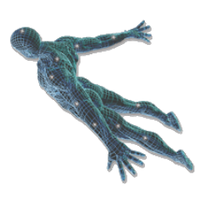
Sam Kriegman
@kriegmerica
Assistant professor of computer science, chemical and biological engineering, and mechanical engineering @NorthwesternU.
ID: 2864832233
https://www.xenobot.group 07-11-2014 00:33:02
837 Tweet
2,2K Followers
414 Following

The 40th anniversary of the ALIFE Conference 2025 conference series is approaching. Please contribute your memories and archival materials to help me prepare a book for this anniversary in the field of #ArtificialLife. #ALIFE40 ISAL Artificial Life #alife droplets.vscht.cz/links/alife40


We're excited to announce the first Evolving Self-organisation workshop at GECCO 2025! Submission deadline: March 26, 2025 More information: …-self-organisation-workshop.github.io

New preprint. Accelerated co-design of robots through morphological pretraining. With Sam Kriegman. We pretrained a universal controller in minutes through differentiable simulation. Then we used it as a prior for zero-shot and few-shot evolution to discover robots like this:






Online this afternoon … a visionary project on the possibilities of alien life 👽led by Claire Isabel Webb , featuring planets imagined by Prof. Lee Cronin Sara Seager Sam Kriegman Estelle Janin and more

our new system trains humanoid robots using data from cell phone videos, enabling skills such as climbing stairs and sitting on chairs in a single policy (w/ Hongsuk Benjamin Choi Junyi Zhang David McAllister)




Professor Ryan Truby (Robotic Matter Lab) developed a soft artificial muscle, paving the way for untethered animal- and human-scale robots. The new actuators provide the performance and mechanical properties required for building robotic musculoskeletal systems. spr.ly/6018fr932



